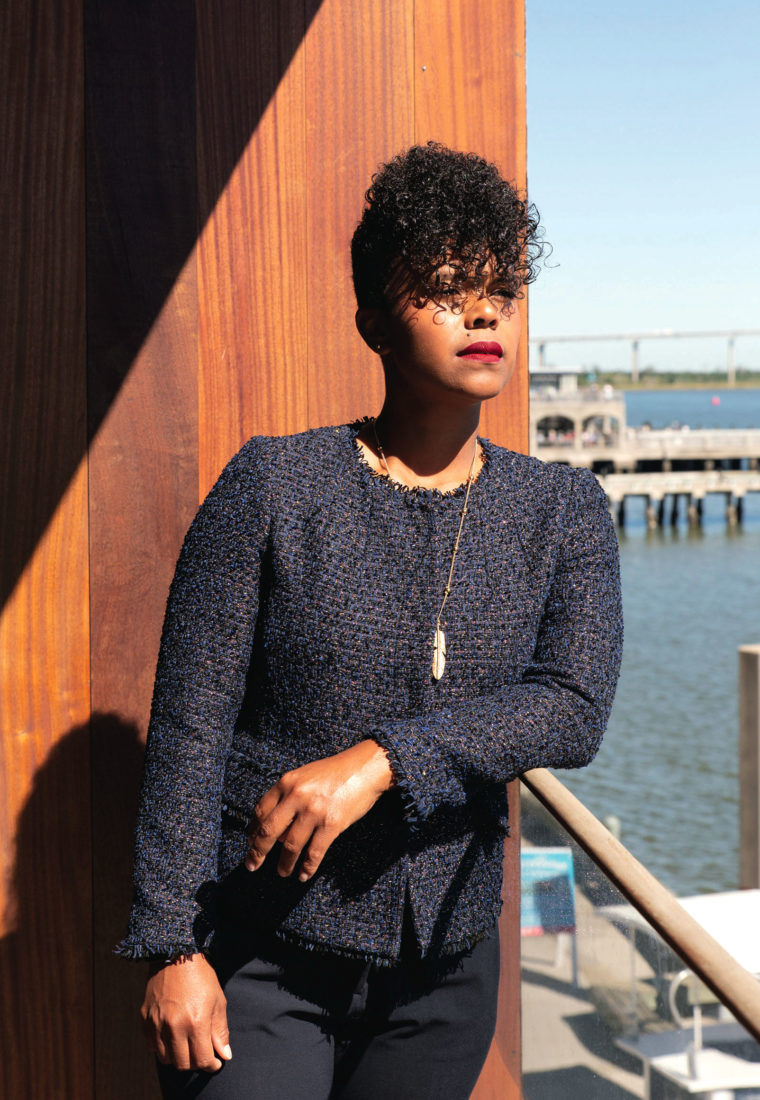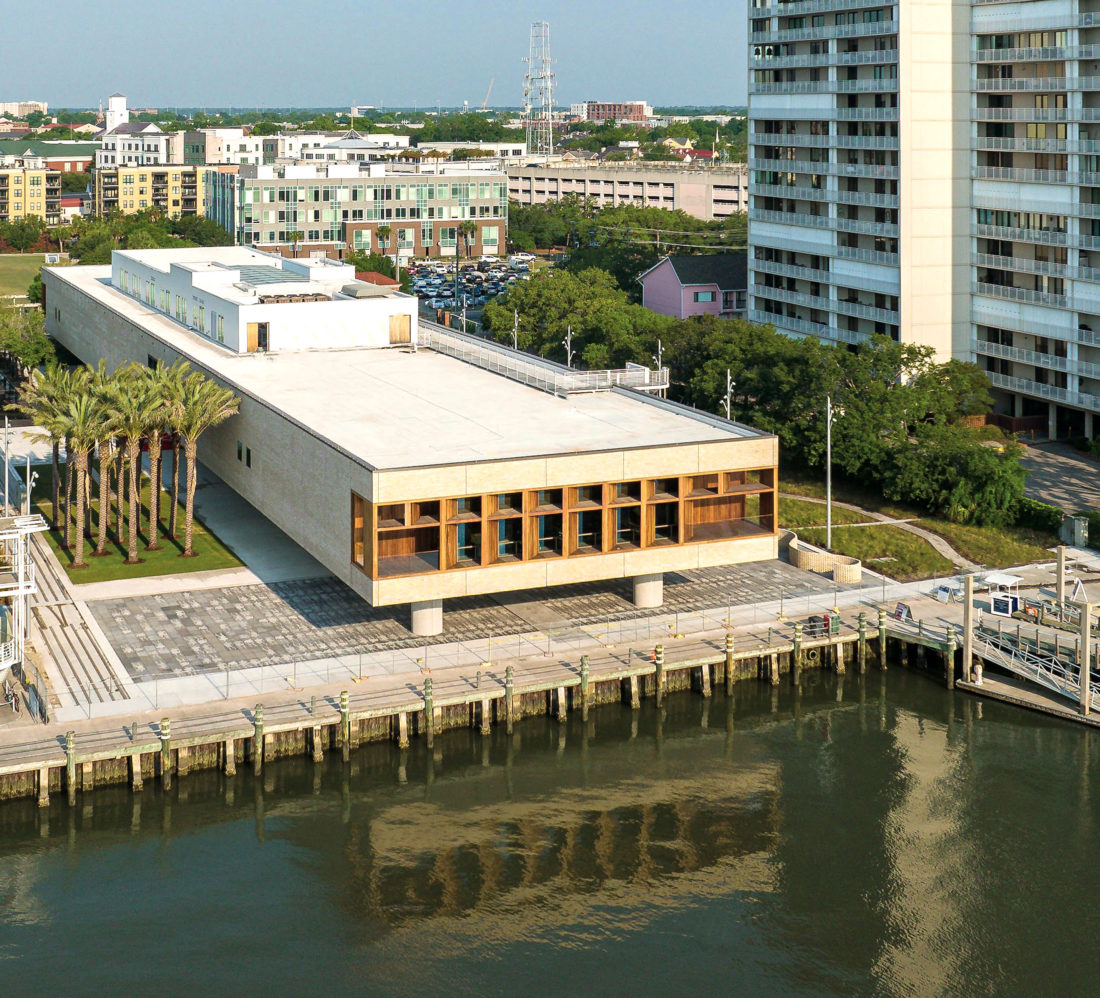Erected on a series of pillars, much of the highly anticipated International African American Museum (IAAM), which will open in late June in Charleston, South Carolina, does not touch the earth. That was a deliberate choice, says the museum’s president and CEO, Tonya Matthews. When the building’s architect, Harry Cobb, learned that the IAAM would be constructed on Gadsden’s Wharf, “he adopted a language,” she explains, “that honored this as hallowed ground.”
Roughly 40 percent of the country’s enslaved Africans took their first steps on American shores at Gadsden’s Wharf. The long arcade formed under the museum will shelter part of the African Ancestors Memorial Garden, a spread in which visitors will be able to reflect on the significance of the site among a sweetgrass field, a palm grove, live oaks, and art installations, each choice carefully considered by landscape architect Walter Hood. Hood also designed a reflecting pool where the garden will meet the harbor called the Tide Tribute. Inspired by the infamous 1787 diagram of the Brookes slave ship, which depicted its human cargo crammed together, the pool has a floor that will comprise reliefs of men, women, and children that will emerge from beneath the water’s shapeless surface as it flows in and out hourly.
Abolitionists used the Brookes images to bolster their cause, but the diagram’s ubiquity ironically reinforced the idea of those enslaved Africans as anonymous and unskilled. The IAAM’s chief learning and engagement officer, Malika Pryor, says that dispelling this myth is one of the museum’s chief goals. Upon entering, visitors will ascend the grand staircase, which will open into the middle of the building, where nine galleries await. In one exhibit, a charcoal-colored wall will present visitors with a roll of indigenous West and Central African names recorded at departure—many of them lost, along with the captives’ ages, as the enslavers in America renamed them. “I think what folks will find surprising is that these were individuals who had existing identities,” Pryor says. “And that the captives who endured that journey were in some cases as young as four years old.”

Modern faces, of both the acclaimed and the everyday, will usher that history into the present. “Your attention will be torn between eight ten-foot screens,” Matthews explains of the entrance. “You may see a still shot of Arthur Ashe to your right, and a small video clip of one of the Williams sisters to the left. And then it’ll switch to a grandmother holding a sign in honor of her son.” A strict chronology of events between the past and today, however, is not what the IAAM has in mind.
“This is an encyclopedic museum in the sense that it covers a wide body of history,” Pryor says, “but what you are not going to get is a simple time line.” Instead, intersectional exhibits will layer people and place. For instance, while the Carolina Gold Gallery focuses on the rice plantation system as it was practiced at a specific moment in time in South Carolina, the African Roots Gallery instead makes connections to a broader history—a film that will play in the gallery, for one, links contemporary hairstyles and body images with ancient West African cultural traditions, including hair and body modification. As Matthews puts it, juxtaposing “something really, really old with something kind of new can help create a deeper understanding.”
In addition to state-of-the-art digital media (including interactive tables and maps facilitated by Google technology), the Center for Family History, focused on African American genealogy, will provide a unique highlight. While the IAAM will not facilitate services akin to PBS’s Finding Your Roots, Pryor clarifies, visitors can expect access to significant resources for advancing their own genealogical research.
“One of my biggest hopes,” Matthews says, “is that folks will be encouraged to be courageously curious. It’s when we are curious that we learn best. The courageous part requires an open and empathetic understanding that some of these stories are harder to learn and hear about than others.”








